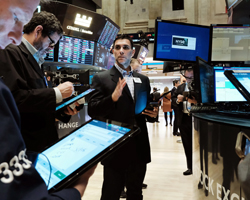US Stock Indices Gain as Bank Shares Surge, Fed's Positive Stress Test Results Drive Optimism | Daily Market Analysis
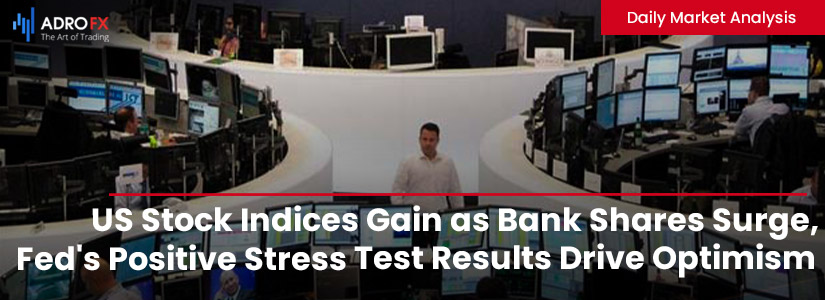
Key events:
- UK - GDP (YoY) (Q1)
- UK - GDP (QoQ) (Q1)
- Eurozone - CPI (YoY) (Jun)
- USA - Core PCE Price Index (MoM) (May)
On Thursday, US stock indices experienced slight gains as bank shares surged following the Federal Reserve's positive outcome of the annual stress test. Additionally, robust economic data fueled expectations of further interest rate hikes by the central bank.
Major lenders such as Wells Fargo, Goldman Sachs, and JPMorgan Chase saw their shares rise by more than 3% and 4% respectively, as the stress test demonstrated their ability to withstand a severe economic downturn.
The S&P 500 banks index climbed over 2%, contributing to a relief rally that also boosted the KBW Regional Banking index by 1.5%.
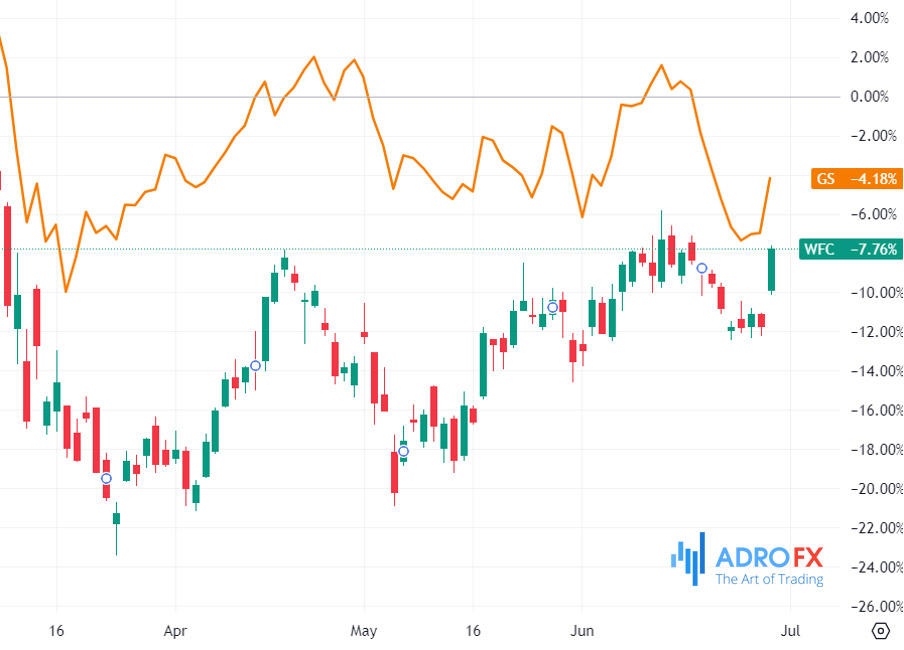
Investors displayed a preference for economically sensitive sectors, while growth sectors tied to interest rates saw less activity, as positive data diminished concerns of an impending recession.
The Russell 2000 index, representing small-cap stocks, saw a gain of over 1%, while the materials index led the upswing among the S&P 500 sectors.

The release of unexpected data revealed a weekly decline in new claims for unemployment benefits in the US, and the country's GDP growth in the first quarter was revised upward to a 2.0% annualized rate, surpassing the previously reported 1.3% pace.
The released data increased speculation that the US Federal Reserve will maintain its tight monetary policy for an extended period, particularly following the hawkish remarks made by Fed Chair Jerome Powell on Wednesday.
Traders adjusted their expectations accordingly, with CME Group's Fedwatch tool indicating an approximately 86.8% likelihood of a 25 basis points interest rate hike to the 5.25%-5.50% range at the Fed's July meeting. This probability increased from 81.8% the previous day.
Despite facing losses in prominent tech companies such as Amazon and Microsoft, the tech-heavy Nasdaq index remained on course to record a gain of over 29% in the first half of the year, marking its largest such increase in four decades.

Meanwhile, the US dollar index reached a two-week high following positive economic data indicating a robust labor market, potentially providing the Federal Reserve with leeway to continue raising interest rates. The dollar index climbed 0.35% to 103.310, reaching its highest level since June 13 when it peaked at 103.44.
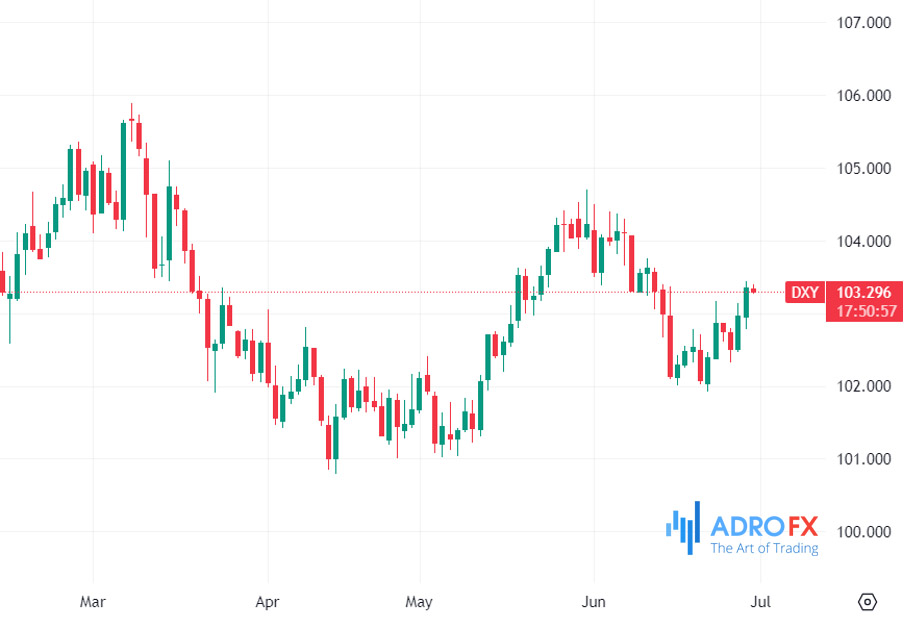
Market expectations for a 25 basis-point rate hike by the Fed at its July meeting rose to 86.8% from the prior session's 81.8%, according to CME's FedWatch Tool. Additionally, the likelihood of a rate cut this year has been completely ruled out.
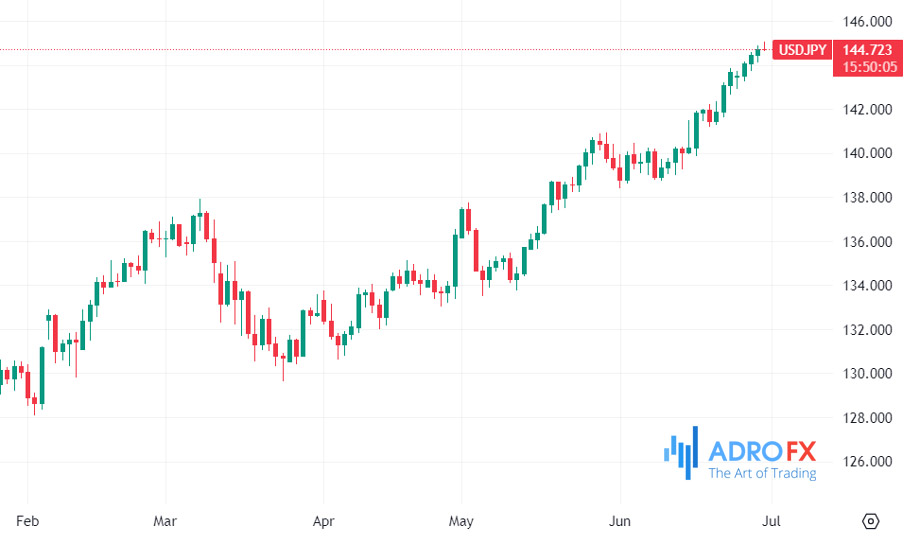
The dollar displayed strength against the Japanese yen for the third consecutive day, hitting a fresh 7.5-month high at 144.90. The divergent monetary policy plans of the US and Japanese central banks are anticipated to continue, contributing to the yen's weakening against the dollar. The yen declined 0.23% against the greenback, with an exchange rate of 144.83 yen per dollar. Investors remain watchful for any potential intervention by the Bank of Japan (BOJ) in the currency, similar to previous instances around the 145 yen mark.
Apart from that, gold prices experienced minimal movement and were reflecting significant losses for the month of June. This decline was attributed to strong US economic data, which bolstered risk appetite and raised concerns about potential interest rate hikes by the Federal Reserve.
The price of gold reached three-month lows earlier in the week, primarily driven by a series of hawkish signals from Fed officials, with a notable emphasis on remarks made by Chair Jerome Powell.
On Friday, the Personal Consumption Expenditure Index (PCE), the Fed's preferred measure of inflation, will be released for May. According to economists surveyed by Reuters, core rates are anticipated to remain stable at 4.7%.


